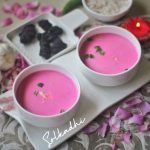Looking for a flavorful and healthy meal on-the-go? Try our delicious tandoori vegetables from the Indian Cuisine, freshly cooked and power packed with bold spices and nutritious veggies. Whether you're in a rush or simply craving a satisfying meal, our tandoori vegetables are the perfect choice for a quick and tasty takeaway option, the best vegetarian alternative for tandoori chicken..
"Relish The Dish With a Little Bit Of Its History"
Index:
1. Punjab's special tandoori vegetables
2. A synopsis of tandoori vegetables
3. The Origin and the interesting history of tandoori cooking
4. The uniqueness of cooking tandoori dishes
5. The clay tandoori pot from the ancient kitchen
6. The practice of having tandoori pots in olden days
7. The prevalence of tandoori oven in the present day
8. The significance of the smoky flavor of tandoori vegetables
9. The benefits of tandoori vegetables
10. Nutritional value
11. Ingredients needed to make tandoori vegetables
12. Direction To Make original punjabi style tandoori vegetables
13. Tried and tested tips that may help you
14. Faqs
15. To sum up
16. Tantalizing trimmings for tandoori vegetables
17. Perfect Garnishments For Tandoori Vegetables
18. The ways which people relish tandoori vegetables
19. The best ambience to host a tandoori lunch party
20. Takeaway
Tandoori vegetables are a flavorful and nutritious vegetarian dish consisting of marinated vegetables skewered and cooked in a tandoor oven, originating from the Punjab region of India.
A Synopsis Of Tandoori Vegetables:
Tandoori vegetables are a delicious and nutritious dish that originated in the Punjab region of India and have since then become a popular staple in Indian cuisine. This vegetarian dish consists of a variety of vegetables that are marinated in a spicy yogurt-based marinade, skewered, and then cooked in a traditional tandoor oven, resulting in a smoky and slightly charred flavor.
Tandoori vegetables are not only flavorful and satisfying, but also packed with vitamins, minerals, and antioxidants, making it a healthy and well-rounded meal option. Whether enjoyed as a side dish or a main course, tandoori vegetables are sure to impress your taste buds and provide a unique culinary experience.
Tandoori vegetables, like many dishes cooked in a tandoor oven, have their origins in the Punjab region of northern India, where tandoors have been used for centuries to bake bread and cook meats and vegetables in a fiery, smoky environment. It is believed that the dish was created as a vegetarian alternative to tandoori chicken, which is a popular dish in Indian cuisine.
The Origin And The Interesting History Of Tandoori Cooking:
Tandoori cooking has a long and rich history in India, dating back to ancient times when tandoor ovens were used to bake bread and cook meats and vegetables in a fiery, smoky environment. The word "tandoor" is derived from the Persian word "tannur," meaning oven, and the technique of cooking in a tandoor was brought to India by the Mughals, who ruled India from the 16th to 19th centuries. Tandoori cooking is now an integral part of Indian cuisine, with a variety of dishes, including tandoori chicken, tandoori naan, and tandoori fish, being popular around the world.
During the Mughal rule in India, tandoori cooking became popular as the Mughal emperors were known for their love of rich and flavorful food; they brought Persian cooking techniques and spices with them to India and popularized the use of the tandoor oven for cooking.
Tandoori cooking was particularly favored for meat dishes, such as tandoori chicken and seekh kebabs, which were marinated in a mixture of spices, yogurt, and lemon juice to create a tender and flavorful dish. The technique of cooking in a tandoor allowed for the meat to be cooked at high temperatures, resulting in a smoky and charred flavor. The use of tandoor ovens also spread to other regions of India, leading to the development of a variety of tandoori dishes, including vegetarian options like tandoori vegetables and tandoori paneer.
The Uniqueness Of Tandoori Dishes:
During the Mughal period in India, special utensils were used to make tandoori dishes. One such utensil was the "sigri," a small charcoal fire that was used to heat the tandoor oven. Another utensil was the "chimta," which was a set of long tongs used to handle the skewers of meat or vegetables inside the tandoor. Additionally, a "bhatti" or a large clay pot was used to store the charcoal and keep it burning.
The use of these utensils allowed for precise control of the cooking temperature and helped to achieve the signature smoky flavor and tender texture of tandoori dishes. Today, modern tandoor ovens may have built-in sigri or chimta features, but the traditional utensils are still used in some kitchens to preserve the authentic flavor and cooking style of tandoori dishes.
The Clay Tandoori Pot From The Ancient Kitchen:
In ancient kitchens in India, clay tandoori pots were commonly used to cook a variety of dishes, including tandoori bread, meats, and vegetables. These pots were cylindrical in shape and made from clay or earthenware, and were typically placed upright in a charcoal or wood-fired pit oven. The pots were heated until they reached a high temperature, and then the food was placed inside, resulting in a smoky and charred flavor. The use of clay tandoori pots allowed for even cooking and helped to retain moisture and flavor in the food. Even today, many traditional restaurants in India and around the world continue to use clay tandoori pots to prepare authentic tandoori dishes.
The Practice Of Having Tandoori Pots In Olden Days:
In ancient times, tandoori pots were not commonly found in households as they were primarily used in commercial or communal settings, such as in bakeries, restaurants, and temples. These establishments would have had larger tandoor ovens with several pots inside to cook a large quantity of food at once. However, in some rural areas, it was common for households to have a small tandoor oven, typically made of mud or clay, for cooking bread and other dishes. These ovens were often shared by several families in a village and were fueled by wood or charcoal. Today, tandoori pots are still not commonly found in households, but modern countertop tandoor ovens are available for home use, allowing people to enjoy the delicious taste of tandoori cooking in their own kitchens.
The Prevalence Of Tandoori Oven In The present Day:
Present-day tandoori pots and ovens have evolved significantly from their ancient counterparts. Tandoori pots are now made of a variety of materials, including clay, metal, and stainless steel, and are available in various sizes and shapes, ranging from small tabletop versions to larger commercial models. Modern tandoor ovens are typically gas-fired and can be found in both commercial and residential kitchens. They are designed to mimic the traditional charcoal-fired tandoor ovens and are equipped with features such as temperature controls, timers, and rotating skewers to ensure even cooking.
Additionally, some modern tandoor ovens are even equipped with built-in ventilation systems to capture smoke and prevent it from spreading throughout the kitchen. The use of modern tandoor ovens and pots has made tandoori cooking more accessible and convenient for home cooks and restaurants alike, while still preserving the unique flavor and texture of traditional tandoori dishes.
The Significance Of Smoky Flavor Of Tandoori Vegetables:
The special smoky flavor of tandoori vegetables is one of the most unique and sought-after aspects of this dish. The smoky flavor is achieved by cooking the vegetables in a tandoor oven, which is traditionally made of clay and heated with charcoal or wood. The intense heat of the oven, combined with the smoky flavor of the charcoal or wood, infuses the vegetables with a deep, earthy flavor.
The smoky flavor also comes from the spices used in the marinade. Spices such as cumin, coriander, and paprika are commonly used in tandoori marinades, and these spices have a smoky, earthy flavor that complements the smoky flavor of the oven. The longer the vegetables are marinated in the spices and yogurt, the more pronounced the smoky flavor will be.
Overall, the smoky flavor of tandoori vegetables is a key component of their unique and delicious taste. It is what sets them apart from other grilled or roasted vegetable dishes and makes them a favorite among those who appreciate the complexity and depth of flavor that tandoori cooking can provide.
The Benefits Of Tandoori Vegetables:
Tandoori vegetables have several health benefits, as they are a nutritious and flavorful addition to any meal. Here are some of the benefits of tandoori vegetables:
High in fiber: Vegetables used in tandoori dishes, such as bell peppers, onions, and tomatoes, are high in fiber, which can help improve digestion and promote regularity.
Low in fat: Tandoori vegetables are typically marinated in a mixture of yogurt and spices, which helps to keep them moist and flavorful without adding extra fat.
Rich in vitamins and minerals: Many vegetables used in tandoori dishes, such as cauliflower, broccoli, and eggplant, are rich in vitamins and minerals, including vitamin C, vitamin K, folate, and potassium.
Antioxidant-rich: Tandoori spices such as turmeric, cumin, and coriander contain antioxidants that can help protect the body against damage from free radicals.
Vegetarian and vegan-friendly: Tandoori vegetables are a great option for vegetarians and vegans who are looking for flavorful and nutritious meat-free dishes.
Just try out this simple yet delicious recipe of Tandoori Vegetables and give a nutritional boost to your body.

Needed Ingredients To Make Tandoori Vegetables:
- Red onion: Adds a sweet and slightly spicy flavor to the dish.
- Red, yellow, and green bell peppers: Provide a colorful and nutritious addition to the dish.
- Zucchini: Brings a mild and delicate flavor to the dish, while adding a bit of crunch.
- Cherry tomatoes: Add a burst of sweet and tangy flavor to the dish.
- Plain yogurt: Serves as the base for the marinade, adding a creamy and tangy flavor to the dish.
- Tandoori masala: A blend of spices that gives the dish its signature smoky and slightly spicy flavor.
- Olive oil: Helps to bind the marinade ingredients together and adds a subtle richness to the dish.
- Salt: Enhances the flavors of the dish and helps to tenderize the vegetables.
- Black pepper: Adds a slight kick of heat to the dish.
- Lemon juice: Adds a bright and zesty flavor to the dish.
- Chopped cilantro: Serves as a flavorful garnish, adding a fresh and herbaceous note to the dish.
Directions To Make Crunchy Tandoori Vegetables:
- Combine the sliced vegetables in a large mixing bowl.
- Whisk together the yogurt, tandoori masala, olive oil, salt, black pepper, and lemon juice in a separate bowl.
- Pour the marinade over the vegetables and toss to coat evenly.
- Thread the vegetables onto skewers, leaving space between each piece.
- Cook the skewers in a preheated oven or tandoor, turning occasionally, until tender and slightly charred.
- Remove the skewers from the oven or tandoor and let them cool for a few minutes.
- Garnish with chopped cilantro and serve hot with naan or rice.
Preheat the tandoor oven to high heat (around 450-500°F).
In a large mixing bowl, combine the sliced onion, bell peppers, zucchini, and cherry tomatoes.
In a separate bowl, whisk together the yogurt, tandoori masala, olive oil, salt, black pepper, and lemon juice.
Pour the yogurt mixture over the vegetables and toss until the vegetables are coated evenly.
Thread the vegetables onto skewers, making sure to leave some space between each piece so that they cook evenly.
Place the skewers onto the hot tandoor oven and cook for 15-20 minutes, turning occasionally, until the vegetables are tender and slightly charred.
Remove the skewers from the tandoor and let them cool for a few minutes before serving.
Garnish with chopped cilantro and serve hot with naan or rice. Enjoy your Punjabi Tandoori Vegetables cooked in a tandoor!
Tried And Tested Tips That May Help You:
Use fresh vegetables: Use fresh, firm vegetables for the best results. Vegetables that are too soft or overripe may fall apart during the cooking process.
Marinate for at least 30 minutes: Marinating the vegetables in a mixture of yogurt and spices for at least 30 minutes, or overnight, will infuse them with flavor and help keep them moist during cooking.
Use a hot tandoor oven or grill: To achieve the smoky and charred flavor of tandoori vegetables, it's essential to use a hot tandoor oven or grill. Preheat your oven or grill to the highest temperature possible before cooking.
Use skewers: Skewering the vegetables helps to cook them evenly and prevents them from falling through the grates of the grill or tandoor oven.
Baste with oil: Basting the vegetables with oil during cooking will help keep them moist and prevent them from drying out.
Use a mix of spices: Use a mix of tandoori spices such as cumin, coriander, paprika, turmeric, and garam masala to give your tandoori vegetables a unique and flavorful taste.
Serve with fresh herbs and lemon wedges: Garnish your tandoori vegetables with fresh herbs such as cilantro or mint and serve with lemon wedges for a fresh and zesty flavor.
By following these tips, you can make the best tandoori vegetables that are flavorful, moist, and have that smoky and charred taste that makes tandoori cooking so special.
Faqs:
What vegetables are best for tandoori cooking?
A: Vegetables that work well for tandoori cooking include cauliflower, broccoli, bell peppers, onions, mushrooms, eggplant, and potatoes.
What is the tandoori marinade made of?
A: The tandoori marinade is typically made with a mixture of yogurt and spices such as cumin, coriander, paprika, turmeric, and garam masala.
Can tandoori vegetables be made in a regular oven?
A: Yes, tandoori vegetables can be made in a regular oven by baking them at a high temperature (around 450-500 degrees Fahrenheit) for 15-20 minutes.
Is tandoori cooking healthy?
A: Tandoori cooking can be healthy as it often involves marinating meats or vegetables in yogurt and spices, which can be low in fat and high in protein. However, some tandoori dishes can be high in sodium, so it's important to be mindful of portion sizes and the overall sodium content of your meal.
Can tandoori vegetables be made without a tandoor oven?
A: Yes, tandoori vegetables can be made without a tandoor oven by grilling them on a barbecue or using a stove top grill pan.
Are tandoori vegetables vegan-friendly?
A: Tandoori vegetables can be vegan-friendly if made with a vegan yogurt alternative, such as soy or almond yogurt.
Can tandoori vegetables be made ahead of time?
A: Yes, tandoori vegetables can be made ahead of time and stored in the refrigerator for up to 2-3 days. Reheat them in the oven or microwave before serving. But as much as possible try to make and serve the tandoori vegetables fresh to enjoy the best results.
To Sum Up:
Nature: Tandoori vegetables are a vegetarian dish typically made with a variety of vegetables marinated in a blend of spices and yogurt. They are often cooked in a tandoor oven, which gives them a smoky and charred flavor.
Color: Tandoori vegetables have a vibrant and colorful appearance, with a range of hues depending on the vegetables used in the dish. The marinade often gives them a reddish-orange color.
Texture: The texture of tandoori vegetables is soft, tender, and moist due to the yogurt-based marinade. The vegetables are often slightly charred on the outside, giving them a crispy texture.
Flavor: Tandoori vegetables have a complex and spicy flavor profile, with notes of cumin, coriander, paprika, turmeric, and garam masala. The yogurt marinade also adds a tangy and slightly sour flavor.
Taste: The taste of tandoori vegetables is rich and savory, with a slight kick of heat from the spices. The smoky flavor from the tandoor oven or grill adds depth and complexity to the taste.
Consistency: The consistency of tandoori vegetables is thick and creamy due to the yogurt marinade. The vegetables are coated in the marinade, which helps to keep them moist and tender during cooking. Overall, the consistency of tandoori vegetables is well-balanced, with a combination of soft and crispy textures.
Tantalizing Trimmings For Tandoori Vegetables:
Naan or Roti: Tandoori vegetables are often served with Indian breads such as naan or roti, which can be used to scoop up the vegetables and soak up the flavorful sauce.
Raita: A cooling raita made with yogurt, cucumber, and mint can help balance the spiciness of the tandoori vegetables and provide a refreshing contrast to their rich flavor.
Chutney: A flavorful chutney made with cilantro, mint, or tamarind can add a burst of tangy flavor to the vegetables.
Rice: Tandoori vegetables also pair well with rice, which can help soak up the flavorful sauce and provide a neutral base for the spices.
Salad: A fresh, crisp salad can be a nice contrast to the richness of the tandoori vegetables. Try a simple cucumber and tomato salad with lemon juice and salt.
Chutney or Pickle: A spicy mango pickle or tangy tamarind chutney can provide a burst of flavor and complement the spiciness of the tandoori vegetables.
Ultimately, the best accompaniments for tandoori vegetables will depend on personal taste preferences and the occasion. Experiment with different options to find the perfect pairing for your next tandoori vegetable dish.
Perfect Garnishments For Tandoori Vegetables:
Garnishing can add a finishing touch to tandoori vegetables and enhance their visual appeal. Here are some perfect garnishments for tandoori vegetables:
Fresh Herbs: Fresh cilantro or mint leaves can be finely chopped and sprinkled over the top of tandoori vegetables for a burst of freshness.
Lemon Wedges: A few lemon wedges can be served on the side of the dish to add a bright, tangy flavor to the vegetables.
Sliced Onion: Thinly sliced red onions can be served alongside tandoori vegetables for a crisp, crunchy texture and a pop of color.
Chaat Masala: A sprinkle of chaat masala, a tangy and slightly spicy Indian spice blend, can add a burst of flavor to the vegetables.
Pomegranate Seeds: A handful of pomegranate seeds can be scattered over the top of tandoori vegetables for a burst of color and sweetness.
Yogurt Sauce: A dollop of yogurt sauce, such as raita, can be added to the dish for a cooling contrast to the spiciness of the tandoori vegetables.
Remember, garnishments should be used sparingly so as not to overpower the flavors of the tandoori vegetables themselves. Choose one or two garnishes that complement the dish and enhance its presentation.
The Way The People Relish Tandoori Vegetables In General:
In Punjab, tandoori vegetables are a popular and beloved dish that is often enjoyed with family and friends. Traditionally, tandoori vegetables are served hot and fresh out of the tandoor, and are typically eaten with naan or roti bread.
People often enjoy tandoori vegetables as a main course dish, paired with a side of raita, pickle, or chutney. It's also common to serve tandoori vegetables alongside other Punjabi dishes such as dal makhani, paneer tikka, or butter chicken.
In addition to being a delicious meal, tandoori vegetables are also enjoyed as a snack or appetizer in Punjab. Street vendors often sell tandoori vegetables on skewers, and they can be eaten on-the-go or as a quick snack.
Overall, tandoori vegetables are a versatile and beloved dish in Punjab that can be enjoyed in a variety of ways, from a main course meal to a quick and satisfying snack.
Best Ambience To Host A tandoori lunch party:
If you're planning to host an outdoor party for tandoori vegetables with a charcoal grill on a chilly noon, here are some ideas to create the perfect ambience:
Cozy Seating: Set up cozy seating arrangements such as warm blankets and cushions to make your guests comfortable and warm.
Outdoor Heater: Install outdoor heaters around the seating area to keep the space warm and comfortable for your guests.
Ambient Lighting: Set up ambient lighting such as string lights or lanterns to create a warm and inviting atmosphere.
Charcoal Grill: Set up the charcoal grill in a central location where guests can see and smell the food cooking.
Bonfire: A bonfire can add to the warmth and coziness of the atmosphere, and can also be used for roasting marshmallows.
Decorations: Use natural elements such as fall leaves, pumpkins, or gourds to decorate the outdoor space and create a festive atmosphere.
Takeaway:
In conclusion, tandoori vegetables are a delicious and healthy dish that are enjoyed around the world for their bold flavors and smoky aroma. Whether you're a vegetarian or simply looking to add more veggies to your diet, tandoori vegetables are a satisfying and flavorful choice that are sure to impress both kids and adults alike.
Happy Cooking!
Ingredients
Directions
Preheat the tandoor oven to high heat (around 450-500°F).
In a large mixing bowl, combine the sliced onion, bell peppers, zucchini, and cherry tomatoes.
In a separate bowl, whisk together the yogurt, tandoori masala, olive oil, salt, black pepper, and lemon juice.
Pour the yogurt mixture over the vegetables and toss until the vegetables are coated evenly.
Thread the vegetables onto skewers, making sure to leave some space between each piece so that they cook evenly.
Place the skewers onto the hot tandoor oven and cook for 15-20 minutes, turning occasionally, until the vegetables are tender and slightly charred.
Remove the skewers from the tandoor and let them cool for a few minutes before serving.
Garnish with chopped cilantro and serve hot with naan or rice. Enjoy your Punjabi Tandoori Vegetables cooked in a tandoor!








